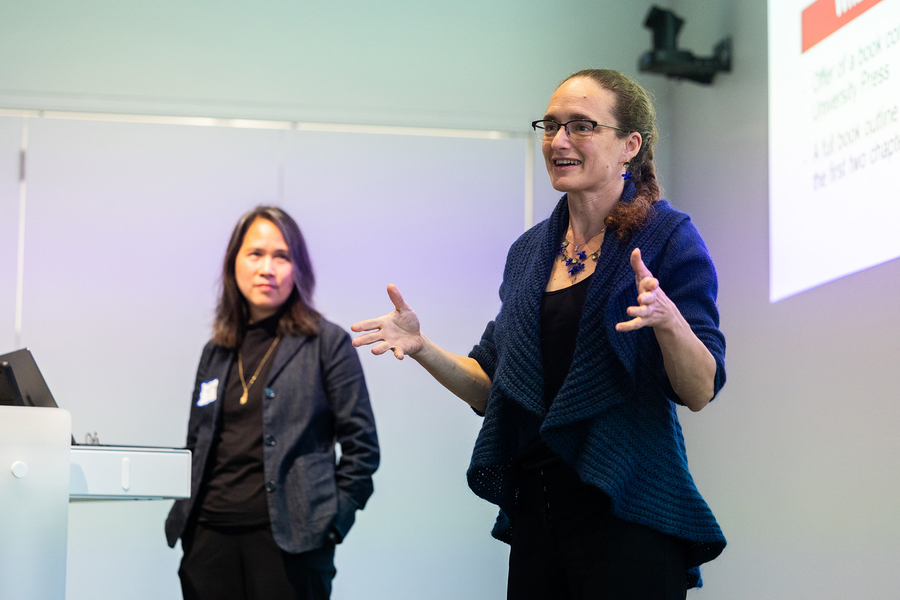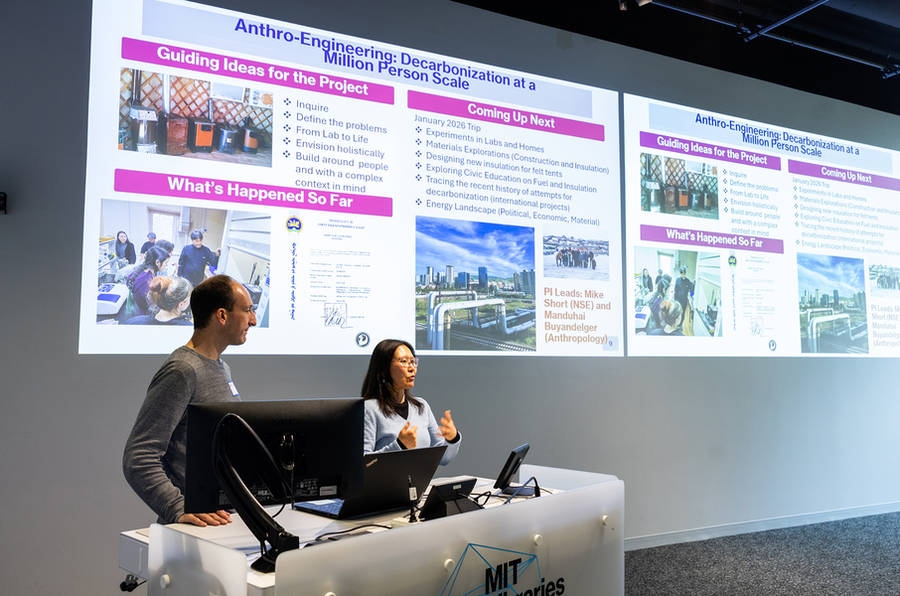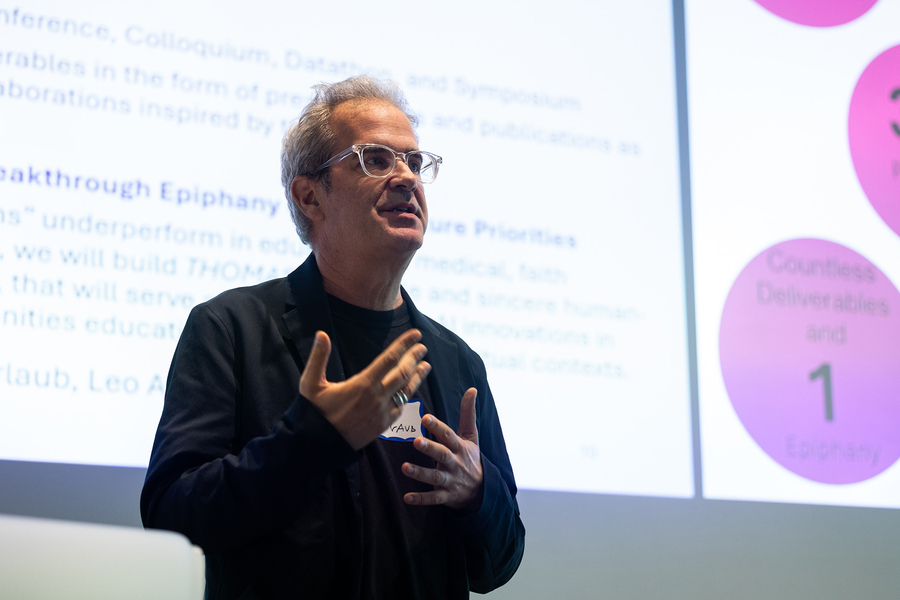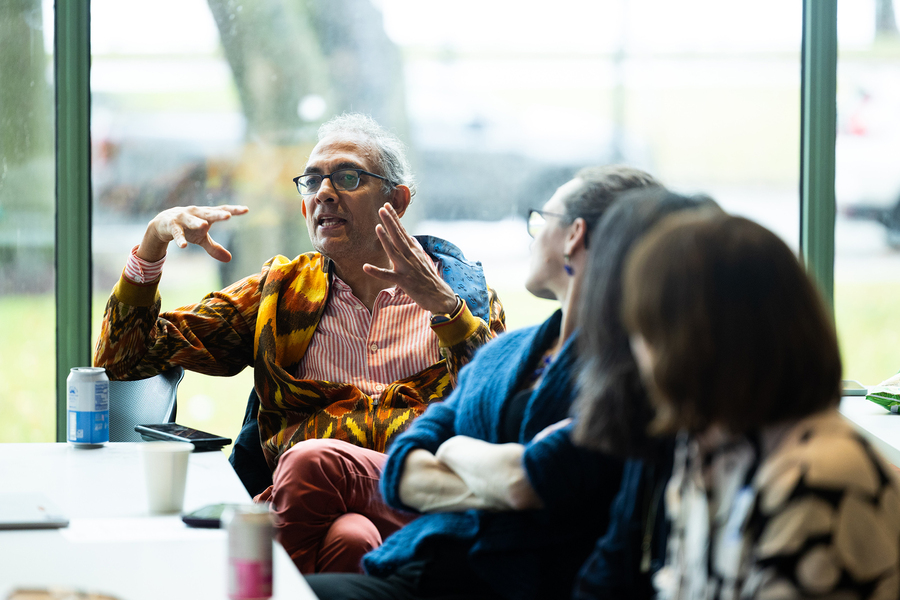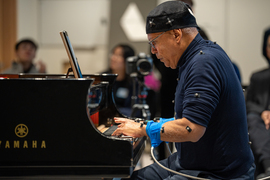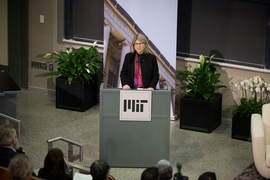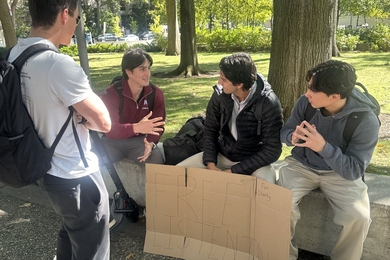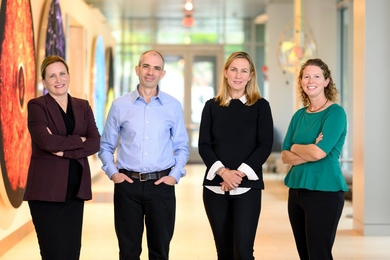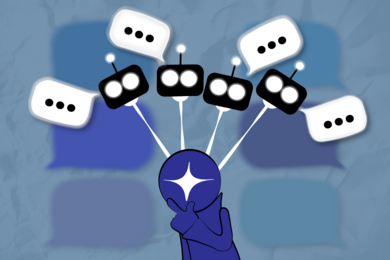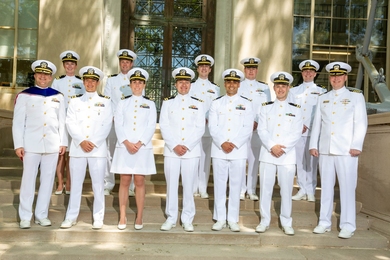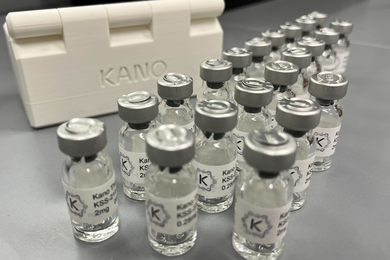Audio
The MIT Human Insight Collaborative (MITHIC) is a presidential initiative with a mission of elevating human-centered research and teaching and connecting scholars in the humanities, arts, and social sciences with colleagues across the Institute.
Since its launch in 2024, MITHIC has funded 31 projects led by teaching and research staff representing 22 different units across MIT. The collaborative is holding its annual event on Nov. 17.
In this Q&A, Keeril Makan, associate dean in the MIT School of Humanities, Arts, and Social Sciences, and Maria Yang, interim dean of the MIT School of Engineering, discuss the value of MITHIC and the ways it’s accelerating new research and collaborations across the Institute. Makan is the Michael (1949) Sonja Koerner Music Composition Professor and faculty lead for MITHIC. Yang is the William E. Leonhard (1940) Professor in the Department of Mechanical Engineering and co-chair of MITHIC’s SHASS+ Connectivity Fund.
Q: You each come from different areas of MIT. Looking at MITHIC from your respective roles, why is this initiative so important for the Institute?
Makan: The world is counting on MIT to develop solutions to some of the world’s greatest challenges, such as artificial intelligence, poverty, and health care. These are all issues that arise from human activity, a thread that runs through much of the research we’re focused on in SHASS. Through MITHIC, we’re embedding human-centered thinking and connecting the Institute’s top scholars in the work needed to find innovative ways of addressing these problems.
Yang: MITHIC is very important to MIT, and I think of this from the point of view as an engineer, which is my background. Engineers often think about the technology first, which is absolutely important. But for that technology to have real impact, you have to think about the human insights that make that technology relevant and can be deployed in the world. So really having a deep understanding of that is core to MITHIC and MIT’s engineering enterprise.
Q: How does MITHIC fit into MIT’s broader mission?
Makan: MITHIC highlights how the work we do in the School of Humanities, Arts, and Social Sciences is aligned with MIT’s mission, which is to address the world’s great problems. But MITHIC has also connected all of MIT in this endeavor. We have faculty from all five schools and the MIT Schwarzman College of Computing involved in evaluating MITHIC project proposals. Each of them represent a different point of view and are engaging with these projects that originate in SHASS, but actually cut across many different fields. Seeing their perspectives on these projects has been inspiring.
Yang: I think of MIT’s main mission as using technology and many other things to make impact in the world, especially social impact. The kind of interdisciplinary work that MITHIC catalyzes really enables all of that work to happen in a new and profound way. The SHASS+ Connectivity Fund, which connects SHASS faculty and researchers with colleagues outside of SHASS, has resulted in collaborations that were not possible before. One example is a project being led by professors Mark Rau, who has a shared appointment between Music and Electrical Engineering and Computer Science, and Antoine Allanore in Materials Science and Engineering. The two of them are looking at how they can take ancient unplayable instruments and recreate them using new technologies for scanning and fabrication. They’re also working with the Museum of Fine Arts, so it’s a whole new type of collaboration that exemplifies MITHIC.
Q: What has been the community response to MITHIC in its first year?
Makan: It’s been very strong. We found a lot of pent-up demand, both from faculty in SHASS and faculty in the sciences and engineering. Either there were preexisting collaborations that they could take to the next level through MITHIC, or there was the opportunity to meet someone new and talk to someone about a problem and how they could collaborate. MITHIC also hosted a series of Meeting of the Minds events, which are a chance to have faculty and members of the community get to know one another on a certain topic. This community building has been exciting, and led to an overwhelming number of applications last year. There has also been significant student involvement, with several projects bringing on UROPs [Undergraduate Research Opportunities Program projects] and PhD students to help with their research. MITHIC gives a real morale boost and a lot of hope that there is a focus upon building collaborations at MIT and on not forgetting that the world needs humanists, artists, and social scientists.
Yang: One faculty member told me the SHASS+ Connectivity Fund has given them hope for the kind of research that we do because of the cross collaboration. There’s a lot of excitement and enthusiasm for this type of work.
Q: The SHASS+ Connectivity Fund is designed to support interdisciplinary collaborations at MIT. What’s an example of a SHASS+ project that’s worked particularly well?
Makan: One exciting collaboration is between professors Jörn Dunkel in Mathematics and In Song Kim in Political science. In Song is someone who has done a lot of work on studying lobbying and its effect upon the legislative process. He met Jörn, I believe, at one of MIT’s daycare centers, so it’s a relationship that started in a very informal fashion. But they found they actually had ways of looking at math and quantitative analysis that could complement one another. Their work is creating a new subfield and taking the research in a direction that would not be possible without this funding.
Yang: One of the SHASS+ projects that I think is really interesting is between professors Marzyeh Ghassemi in Electrical Engineering and Computer Science and Esther Duflo in Economics. The two of them are looking at how they can use AI to help health diagnostics in low-resource global settings, where there isn’t a lot of equipment or technology to do basic health diagnostics. They can use handheld, low-cost equipment to do things like predict if someone is going to have a heart attack. And they are not only developing the diagnostic tool, but evaluating the fairness of the algorithm. The project is an excellent example of using a MITHIC grant to make impact in the world.
Q: What has been MITHIC’s impact in terms of elevating research and teaching within SHASS?
Makan: In addition to the SHASS+ Connectivity Fund, there are two other possibilities to help support both SHASS research as well as educational initiatives: the Humanities Cultivation Fund and the SHASS Education Innovation Fund. And both of these are providing funding in excess of what we normally see within SHASS. It both recognizes the importance of the work of our faculty and it also gives them the means to actually take ideas to a much further place.
One of the projects that MITHIC is helping to support is the Compass Initiative. Compass was started by Lily Tsai, one of our professors in Political Science, along with other faculty in SHASS to create essentially an introductory class to the different methodologies within SHASS. So we have philosophers, music historians, etc., all teaching together, all addressing how we interact with one another, what it means to be a good citizen, what it means to be socially aware and civically engaged. This is a class that is very timely for MIT and for the world. And we were able to give it robust funding so they can take this and develop it even further.
MITHIC has also been able to take local initiatives in SHASS and elevate them. There has been a group of anthropologists, historians, and urban planners that have been working together on a project called the Living Climate Futures Lab. This is a group interested in working with frontline communities around climate change and sustainability. They work to build trust with local communities and start to work with them on thinking about how climate change affects them and what solutions might look like. This is a powerful and uniquely SHASS approach to climate change, and through MITHIC, we’re able to take this seed effort, robustly fund it, and help connect it to the larger climate project at MIT.
Q: What excites you most about the future of MITHIC at MIT?
Yang: We have a lot of MIT efforts that are trying to break people out of their disciplinary silos, and MITHIC really is a big push on that front. It’s a presidential initiative, so it’s high on the priority list of what people are thinking about. We’ve already done our first round, and the second round is going to be even more exciting, so it’s only going to gain in force. In SHASS+, we’re actually having two calls for proposals this academic year instead of just one. I feel like there’s still so much possibility to bring together interdisciplinary research across the Institute.
Makan: I’m excited about how MITHIC is changing the culture of MIT. MIT thinks of itself in terms of engineering, science, and technology, and this is an opportunity to think about those STEM fields within the context of human activity and humanistic thinking. Having this shift at MIT in how we approach solving problems bodes well for the world, and it places SHASS as this connective tissue at the Institute. It connects the schools and it can also connect the other initiatives, such as manufacturing and health and life sciences. There’s an opportunity for MITHIC to seed all these other initiatives with the work that goes on in SHASS.
